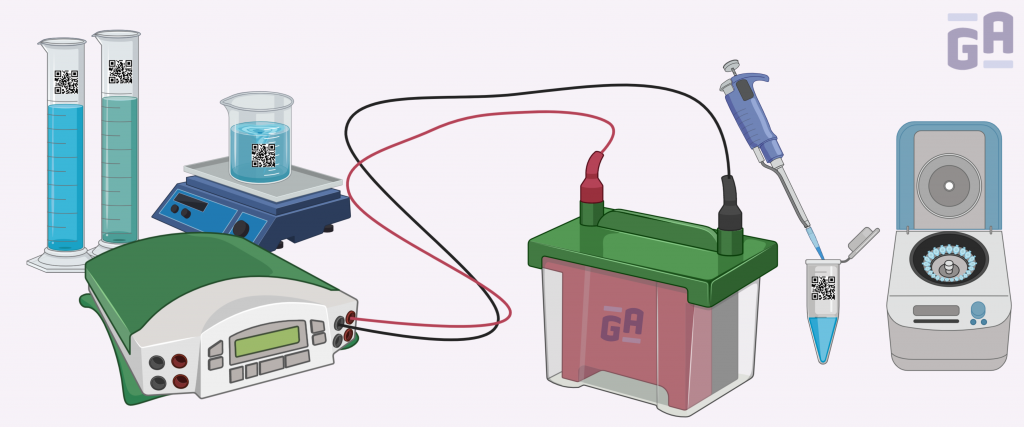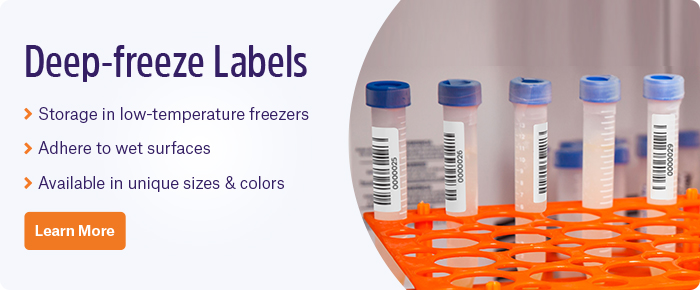 Western blot is likely the most common biochemistry technique used to separate proteins. Things can often get messy though, with so many samples that require analysis scattered across multiple different projects. To help improve your organization, here are helpful tips when labeling your western blot and SDS-Page experiments.
Western blot is likely the most common biochemistry technique used to separate proteins. Things can often get messy though, with so many samples that require analysis scattered across multiple different projects. To help improve your organization, here are helpful tips when labeling your western blot and SDS-Page experiments.
Sample Preparation
Samples for western blotting can originate from almost anywhere, from media used to grow cells to tissue or cells derived from an organism. Most often, these samples aren’t prepared immediately for analysis and need to be stored in deep-freeze conditions (-80°C/-112°F) for at least several days. If used immediately, these samples must still be incubated on ice in lysis buffer (-4°C/+25°F), which can contain detergents, like 3-((3-cholamidopropyl) dimethylammonio)-1-propanesulfonate (CHAPS) and Triton X-100.
Here, handwriting on tubes is not recommended, especially when a large volume of samples must be collected. This identification method does not provide a means to efficiently track your samples as they’re processed or for subsequent storage. Using deep-freeze barcode labels instead is a much better way of identifying these samples. By labeling the samples and their container with barcodes, you can quickly and precisely locate your samples, something that can be difficult when navigating large freezers holding a wide variety of specimens belonging to multiple lab personnel. This means less time spent searching for your samples, reducing the likelihood of other samples thawing and degrading while you search.
It’s also important that the deep-freeze labels you’re using be waterproof—they’re being stored in humid freezers that can be full of ice, after all—and somewhat resistant to the detergents used in protein extraction buffers. Though thermal-transfer printouts provide optimal chemical resistance, direct thermal, inkjet, or laser printers may also supply enough resistance against these buffers to work efficiently.
Once samples are defrosted and ready to be denatured (if that’s what your protocol requires), a new set of tubes will likely be needed for aliquoting the right amount of sample along with SDS-based laemmli buffer. Next, they will need to be heated for approximately 5 minutes at 95°C (203°F), and centrifuged, prior to loading on the gel.
SDS-PAGE
Once prepared, your samples will eventually be separated using polyacrylamide gel electrophoresis (PAGE), according to your SOP. Unfortunately, there is no perfect method of labeling either the samples or the gel itself as it’s running, so proper caution must be taken to note down the identity of the wells for each gel. Here is where having a laboratory information management system (LIMS) is especially useful. It can electronically record both the conditions of your PAGE as well as sample identity and any other relevant information using a computer-based system. Sample identity can be registered via scanning the barcodes of your sample tubes as each well is filled, ensuring no mistakes are made as you pipette them into the gel. The LIMS can even be used to track the date you prepared the gels, their acrylamide concentration, and any other notable information. Speaking of preparing gels, if you’re polymerizing them the night before and storing them in ziplock bags, it’s recommended to identify each gel cassette with removable waterproof labels, as well as the bag itself. This is especially important when making multiple gels with varying acrylamide concentrations, as mix-ups can easily occur here.
Labeling Your Western Blot Membranes
PVDF and nitrocellulose membranes are slightly easier to identify than acrylamide gels. Once proteins are transferred from the gel, the corner can be labeled with a small amount of information using a sharpened pencil. When blocking or washing, the containers used to house the blots should also be identified with waterproof barcode labels, as buffer, milk, and other water-based reagents are likely to spill over when buffers need to be exchanged. Blotting with antibodies overnight is usually done at 4°C, requiring the use of waterproof labels that also withstand low-temperature conditions for the containers that house the blots. These labels should be identified with information such as the name of the antibody, its dilution, and the identity of the blot. Once the blot has been analyzed, small airtight plastic bags can be used to store the blots in deep-freeze conditions, if needed; these bags should be identified using waterproof deep-freeze barcode labels. Integrating all this information into a LIMS is key, as it can prevent mix-ups resulting in sets of samples being treated with the wrong antibodies or the wrong antibody dilutions, in addition to making it easier to track your library of membranes.
When searching for products that meet all the requirements for western blotting, LabTAG’s deep-freeze series of labels is a good place to start. These labels resist temperatures as low as -80°C and as high as 120°C, making them ideal for both long-term identification and storage of protein extracts, PVDF and nitrocellulose membranes, as well as heating at 95°C. They are also waterproof and come with either a removable or permanent adhesive.
LabTAG by GA International is a leading manufacturer of high-performance specialty labels and a supplier of identification solutions used in research and medical labs as well as healthcare institutions.




